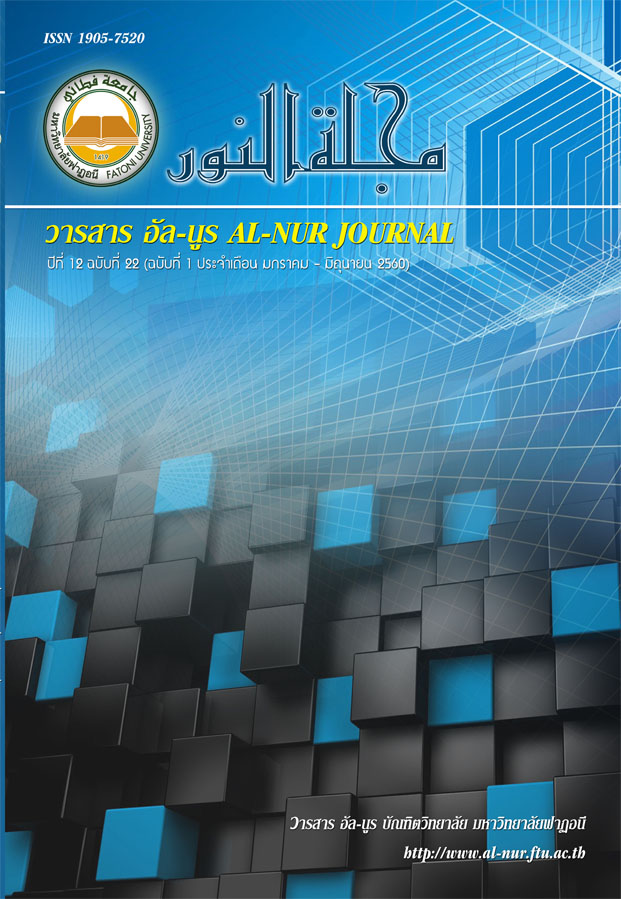การสร้างแบบวัดการคิดอย่างมีวิจารณญาณสำหรับนักเรียน ชั้นประถมศึกษาปีที่ 6 โรงเรียนสังกัดสำนักงานเขตพื้นที่ การศึกษาประถมศึกษาสงขลา เขต 3
คำสำคัญ:
แบบวัด, การคิดอย่างมีวิจารณญาณ, เกณฑ์ปกติบทคัดย่อ
บทคัดย่อ
งานวิจัยนี้มีวัตถุประสงค์เพื่อสร้างและหาคุณภาพของแบบวัดการคิดอย่างมีวิจารณญาณสำหรับนักเรียนชั้นประถมศึกษาปีที่ 6 ในโรงเรียนสังกัดสำนักงานเขตพื้นที่การศึกษาประถมศึกษาสงขลา เขต 3 เป็นแบบทดสอบสถานการณ์วัดความสามารถในการคิดอย่างมีวิจารณญาณ 5 ด้านตามแนวทฤษฎีของวัตสันและ เกลเซอร์ คือ ด้านที่ 1 ความสามารถในการสรุปอ้างอิง ด้านที่ 2 ความสามารถในการยอมรับข้อตกลงเบื้องต้น ด้านที่ 3 ความสามารถในการนิรนัย ด้านที่ 4 ความสามารถในการตีความ และด้านที่ 5 ความสามารถในการประเมินข้อโต้แย้ง หาคุณภาพด้านความเที่ยงตรงเชิงเนื้อหา ความยากง่ายและอำนาจจำแนก ความเชื่อมั่นของแบบทดสอบ สร้างเกณฑ์ปกติและคู่มือการใช้ กลุ่มตัวอย่างเป็นนักเรียนชั้นประถมศึกษาปีที่ 6 ภาคเรียนที่ 1 ปีการศึกษา 2559 สังกัดสำนักงานเขตพื้นที่การศึกษาประถมศึกษาสงขลา เขต 3 จำนวน 400 คน ผลการศึกษาปรากฏว่า
แบบวัดความสามารถในการคิดอย่างมีวิจารณญาณ มีค่าความเที่ยงตรงเชิงเนื้อหา หาโดยดัชนีความสอดคล้อง IOC จากผู้เชี่ยวชาญ มีค่าตั้งแต่ 0.60 ถึง 1.00 ซึ่งผ่านเกณฑ์ที่กำหนดไว้ทุกข้อ ความยากง่าย หาโดยการใช้สูตรความยากง่ายของข้อสอบโดยการหาสัดส่วน หรือจำนวนร้อยละของคนที่ตอบ ข้อสอบข้อนั้นถูกกับจำนวนคนทั้งหมด มีค่าตั้งแต่ 0.41 ถึง 0.81 อำนาจจำแนก หาโดยวิธีการแบ่งกลุ่มสูงกลุ่มต่ำ โดยใช้เกณฑ์ 27% มีค่าตั้งแต่ 0.24 ถึง 0.71 ความเชื่อมั่นของแบบวัด โดยหาความสอดคล้องภายในวิธีของคูเดอร์ – ริชาร์ดสัน ( KR- 20) มีค่าความเชื่อมั่นเท่ากับ 0.90 และเกณฑ์ปกติของแบบวัดมีคะแนนทีปกติตั้งแต่ T29 ถึง T68
Abstract
This research aimed to create and assess the measure of critical thinking for Prathom 6 students in Songkhla Primary Education Service Area Office 3. It was scenario testing for measuring the ability of critical thinking in five sections according to Watson and Glaser theory which were the ability of inferences, the ability of assumptions, the ability of deductions, the ability of interpreting information, and the ability of analysing arguments. To find out content validity, difficulty, discrimination, and reliability. To create norms and using guide.
The samples were 400 Prathom 6 students in the first semester of 2016 under the Songkhla Primary Education Service Area Office 3. The result of the research found that the measure of critical thinking has content validity by using Index of Congruence (IOC). Every item was between 0.60-1.00 that met the criteria. The difficulty in every item met the criteria between 0.41-0.81 by using formula of difficulty index. Discrimination index in every item met the criteria between 0.24-0.71 by dividing students into lower and upper group with 27% of sample. The reliability of the measure met 0.90 by using the Kuder–Richardson Formula 20 (KR-20) and the T-score is between T29 - T68.



